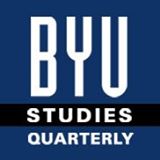BYU Studies Quarterly

Article Title
The Temple According to 1 Enoch
Abstract
During the Second Temple period (516 BCE to 70 CE), most Jews in Jerusalem worshipped at the Jerusalem temple. But a separate community at Qumran decried the lack of ritual purity in the activity at the Second Temple and saw their community as an ersatz for the temple. Literature at Qumran included 1 Enoch, a collection of five tractates composed in the Aramaic language between the fourth century BCE and the turn of the era and ascribed to the ancient patriarch Enoch, the head of the seventh generation after creation (Gen. 5:18–24). Some of the tractates are concerned about a dysfunctional Jerusalem cult and resolve the problem of how to worship by looking forward to the approaching eschaton. Other sections of 1 Enoch tell that the real action is already taking place in the true temple, which is the heavenly temple. There, variously, God is enthroned, and the Son of Man is being prepared to enact divine judgment so that God's will may be done on earth as it is in heaven. Here Enoch remains until the end-time, witnessing the interaction between God and the archangels. This vision refers to three Israelite sanctuaries—the tabernacle, the First Temple, and the Second Temple—and to the establishment of a new Jerusalem, in which there is no temple, because the city itself serves as a temple.
Recommended Citation
Nickelsburg, George W.E.
(2014)
"The Temple According to 1 Enoch,"
BYU Studies Quarterly: Vol. 53:
Iss.
1, Article 3.
Available at:
https://scholarsarchive.byu.edu/byusq/vol53/iss1/3
